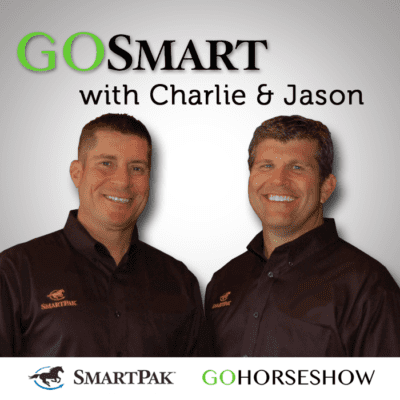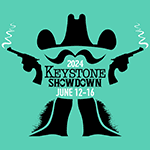GoHorseShow, in partnership with SmartPak, is pleased to continue the highly popular column, GoSmart with Charlie and Jason. Team SmartPak riders, Charlie Cole and Jason Martin, have achieved success beyond compare. Since founding Highpoint Performance Horses in 1992, they have trained over 100 World Champions and 200 All-American Quarter Horse Congress Champions.
Without question, a large part of their success lies in their ability to pick outstanding horses for their clients. Anyone who has ever been a part of the horse show world knows that owning the right horse is a huge factor in achieving one’s dreams and having a good time while doing it.
In part two of this series (read part one here), Charlie and Jason discuss what they look for when shopping for futurity/rail horses and all-around horses, what a buyer should do when they go look at a horse, and why it may take a while to find the “perfect” horse.
Futurity/Rail Horses
 Both Cole and Martin agree that shopping for a futurity prospect is probably the most difficult horse to find.
Both Cole and Martin agree that shopping for a futurity prospect is probably the most difficult horse to find.
“It is nearly impossible to look at a yearling and be able to tell if it is going to make it,” said Cole (pictured right). “There are a few that step out, and it is easy for them, but I like for the horse to tell me when it’s ready. The last thing I want is training crammed into them. Shortcuts don’t work.”
“We try not to buy yearlings at all,” added Martin. “Just because it is so hard to know if they are going to make it or not. My personal favorite is three-year-olds. By that point, it is easier to find something that already knows a little something and exhibits a lot of raw talent. They may even already have a basic lead change.”
But what if you have your heart set on that young prospect and making all your dreams come true with that yearling?
Cole shared some sound advice.
 “Realize that you are always taking a risk,” said Cole. “So, look for something that obviously has natural movement and a sound mind and then find a horse that you like how it looks. Since it is a gamble, you may as well look for something that you actually like, so if it isn’t ready for the two-year-old futurities, you will still have something that you will continue to enjoy as it matures.”
“Realize that you are always taking a risk,” said Cole. “So, look for something that obviously has natural movement and a sound mind and then find a horse that you like how it looks. Since it is a gamble, you may as well look for something that you actually like, so if it isn’t ready for the two-year-old futurities, you will still have something that you will continue to enjoy as it matures.”
Speaking of mature, if you are shopping for a western pleasure or hunter under saddle horse (be it junior or senior) what should be at the top of your shopping list?
Clearly, the movement is significant, but Cole and Martin (pictured left) suggest finding something in the horse that makes them stand out, and for them that “something” is the expression.
“I don’t think we realized early on how important expression is,” said Martin. “But it truly is hard to get a plus one in anything if it is clear to the judge that the horse is not enjoying their job.”
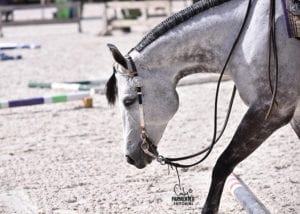 “A good expression stands out in pen,” said Cole. “It is crucial to me to have a horse that goes down the rail looking like they are enjoying what they’re doing. So when I look for a western pleasure or hunter under saddle horse, that is something I look for.”
“A good expression stands out in pen,” said Cole. “It is crucial to me to have a horse that goes down the rail looking like they are enjoying what they’re doing. So when I look for a western pleasure or hunter under saddle horse, that is something I look for.”
Along with a good expression, Martin stressed that for rail horses, eye appeal is also something that should be highly considered.
“Pretty goes a long way,” he said. “Honestly, you can get away with sacrificing movement if the horse is beautiful and has an excellent expression.”
Perhaps Audrey Hepburn was right when she said, “Happy horses are the prettiest.” Okay, so she said “happy girls are the prettiest,” but you get the idea.
All-Around Horses
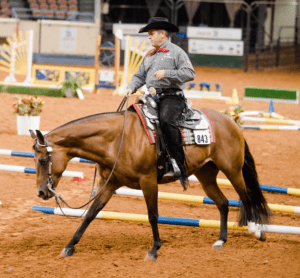 It is no secret that the all-around is Cole and Martin’s forte and they shared some “must haves” and “must dos” when it comes to looking for and going to see a potential all-around horse.
It is no secret that the all-around is Cole and Martin’s forte and they shared some “must haves” and “must dos” when it comes to looking for and going to see a potential all-around horse.
Probably not surprisingly, both prefer to seek these horses out at the end of their three-year-old year no matter what their future job will be (Cole, like Martin, also has an affinity for three-year-olds).
“When it comes to western riding horses, you want to extend their lope to a western riding pace when you go look at them,” said Cole. “Some horses get better at that speed, and some can’t handle it, so that is the most important thing to look for.”
You want a horse that is excellent minded and a superb loper,” said Martin. “I also like to long trot horses around and gallop them to see how they may handle a pattern for the equitation or the horsemanship.”
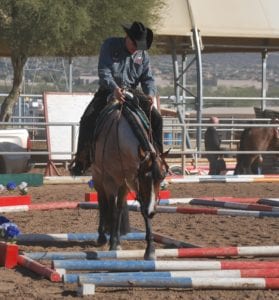 Finally, Cole and Martin suggest taking the prospective horse over some poles to analyze their trail potential.
Finally, Cole and Martin suggest taking the prospective horse over some poles to analyze their trail potential.
“I like the horse to be attentive to the poles and I look to see if they are short strided or if they add a step behind,” said Cole. “Those horses may not work out very well for the trail. Ultimately, the horse has to be able to fit the course, so that’s what I look for.”
For Cole and Martin, these exercises will show you how a horse responds to being “pushed on” which, in return tells potential buyers if the horse will be a strong all-around horse or if they may be better suited as a rail horse.
“You can tell fairly quickly if they don’t like to be pushed on,” said Cole. “I look for things like if they get stiff in the jaw or their expression drastically changes as I am feeling them out.”
The “New” Market and Why Horse Shopping Can Be Tough
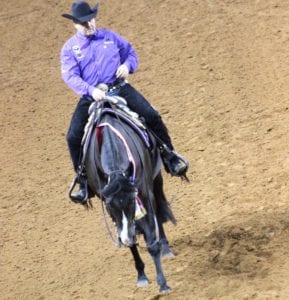 In more ways than one, horse showing just simply isn’t what it used to be. Everything is more expensive, more specialized, and a lot has changed over the years, especially with the housing crash of 2008.
In more ways than one, horse showing just simply isn’t what it used to be. Everything is more expensive, more specialized, and a lot has changed over the years, especially with the housing crash of 2008.
Cole and Martin spoke a lot about being patient when it comes to shopping for the “perfect” horse and why it may take a long time to find one.
“Following the housing crash, people weren’t breeding horses like they used to,” said Martin. “Unfortunately, this resulted in a shortage of show horses and you have what we have today, which is not a lot of high-quality horses on the market.”
“Back in the 90s and early 2000s, Jason and I could go to Texas and look at multiple horses in multiple barns,” said Cole. “Now, they just aren’t there. We have less variety and we have fewer horses to pick from and a shortage of quality horses across the board.”
 Translation: No matter what division you are in or what discipline you show in, it may take a while and some serious footwork to find the right horse.
Translation: No matter what division you are in or what discipline you show in, it may take a while and some serious footwork to find the right horse.
“For example, the whole youth industry has changed,” said Martin. “We used to have our open horses double as youth horses and that rarely happens anymore.”
He continued, “We also don’t have the old days where sixty thousand could get you pretty much whatever you wanted. The market has increased and a lot of average income Americans have a hard time finding a horse that is competitive at the top level that fits into their budget. Compound that with the shortage of horses and it just makes finding the right horse even more challenging.”
Another conundrum that Cole sees in the market is the fact that the industry has gotten so specialized.
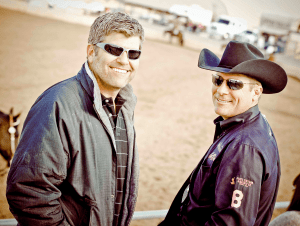 “I think the specialization has come at a cost,” he said. “We just don’t have as many trainers doing multiple events, so trying to find a horse that has the capability to do the all-around has also become tough.”
“I think the specialization has come at a cost,” he said. “We just don’t have as many trainers doing multiple events, so trying to find a horse that has the capability to do the all-around has also become tough.”
Cole forecasts that as the economy grows and breeding picks up, the market will have a larger number of horses to choose from, so if you are shopping and just can’t find what you are looking for, just give it some time.
However, he also speculated that with the age of specialization, it could potentially remain just as hard to find that perfect horse.
Both Martin and Cole pointed out that this time in the market should not discourage people out there shopping for a horse, they just need to realize what is happening and why and use that knowledge to be smart about horse shopping.
Martin summed it up perfectly when he concluded, “It’s just a fascinating time in the market right now, and we all just need to be patient.”
CLICK HERE to read Part 1 of Charlie and Jason’s horse shopping series.


